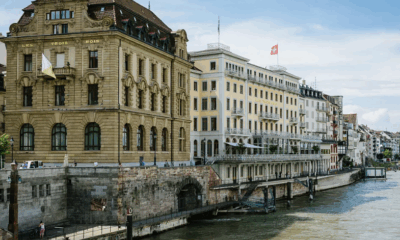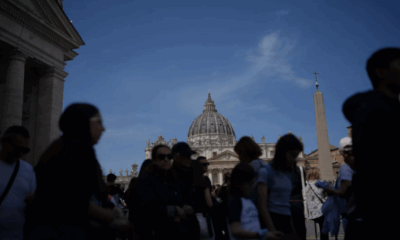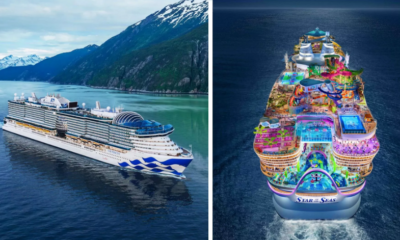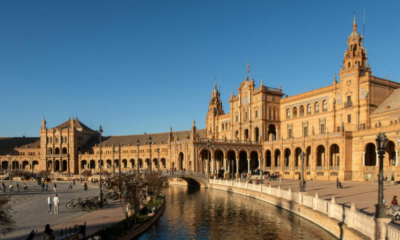Travel
Exploring the Great Lakes: A Road Trip from NYC to Chicago

A road trip from New York City to Chicago along the Great Lakes is an unforgettable adventure that combines scenic beauty, rich history, and vibrant urban experiences. As you journey from the East Coast to the Midwest, you’ll pass through charming small towns, visit cultural cities, and marvel at some of the country’s most stunning natural wonders.
From the breathtaking sight of Niagara Falls to the lakeside charm of Cleveland and the dynamic energy of Chicago, each stop offers a unique slice of American life. This route not only provides the freedom to explore at your own pace, but also delivers a perfect balance of outdoor adventure and city exploration, making it an ideal road trip for travelers seeking variety and excitement.
First Stop: Buffalo and Niagara Falls
Buffalo, just a few hours’ drive from New York City, is your first stop on the road to Chicago. Once known as a major industrial hub, Buffalo has undergone an impressive revitalization, becoming a vibrant city with a flourishing arts scene, delicious food, and stunning waterfront views along Lake Erie. The city’s architecture is a sight to behold, with beautiful art deco buildings and Frank Lloyd Wright’s masterpieces like the Darwin D. Martin House. Buffalo’s growing food scene is not to be missed—make sure to try its famous Buffalo wings at one of the many local eateries, or explore the diverse range of culinary options downtown.
Just a short drive from Buffalo, Niagara Falls awaits as one of the most iconic natural wonders in North America. The thundering waterfalls, located on the border of the United States and Canada, are a must-see stop on your road trip. You can explore the falls from the U.S. side by walking along Niagara Falls State Park, taking the Maid of the Mist boat tour to get up close to the base of the falls, or venturing into the Cave of the Winds for a thrilling walk beneath the cascades. For a different perspective, cross the border into Canada (don’t forget your passport!) for panoramic views of the falls and additional attractions like Journey Behind the Falls, where you can explore tunnels carved into the rock for an up-close look at the roaring water.
With its blend of city charm and natural splendor, Buffalo and Niagara Falls make for the perfect first stop on your Great Lakes road trip, setting the stage for more unforgettable adventures ahead.
Next Stop: Cleveland, Ohio
After leaving the iconic sights of Niagara Falls behind, your road trip continues to Cleveland, Ohio—a city rich in history and culture, nestled on the shores of Lake Erie. Cleveland, once an industrial powerhouse, has transformed itself into a vibrant destination that mixes old-world charm with modern attractions, making it an essential stop on your Great Lakes journey.
One of Cleveland’s key attractions is the Rock & Roll Hall of Fame, a must-visit for music lovers. Located right on Lake Erie’s waterfront, this iconic museum tells the story of rock music’s greatest legends through interactive exhibits, memorabilia, and rare artifacts. Whether you’re a fan of classic rock, punk, or modern-day hits, the Rock & Roll Hall of Fame offers an exciting deep dive into the history of this genre.
After soaking up some music history, take time to enjoy Cleveland’s beautiful waterfront. The Lake Erie shoreline offers scenic walks, peaceful parks, and stunning sunsets over the water. The nearby Cleveland Metroparks system features miles of hiking and biking trails, making it the perfect place to stretch your legs and enjoy the fresh air after a long drive.
Cleveland is also home to the famous West Side Market, one of the city’s oldest public markets, filled with local vendors offering everything from fresh produce to artisanal goods. It’s a great spot to grab a bite or pick up unique snacks for your road trip. From freshly baked bread to international delicacies, you’ll find something for every taste.
For art and history enthusiasts, Cleveland’s University Circle area is a cultural treasure trove. This neighborhood houses the Cleveland Museum of Art, which features a world-class collection of art spanning centuries and continents, and the Museum of Natural History, perfect for family-friendly fun. Spend a few hours exploring these renowned institutions before heading back on the road.
With its mix of lakeside beauty, rich history, and cultural attractions, Cleveland is a destination that adds depth and excitement to your Great Lakes road trip.
Stop in Toledo or Detroit, Michigan
As your road trip progresses westward, you have two exciting options for your next stop: Toledo or Detroit, each offering a distinct flavor of the Midwest. Whether you’re seeking small-town charm or a city brimming with industrial history and cultural revival, both destinations have something unique to offer road trippers.
Toledo, Ohio. If you’re in the mood for a more laid-back, small-town vibe, Toledo is a perfect choice. Situated along the Maumee River, Toledo offers a rich blend of history, culture, and nature. Its blossoming art scene is centered around the Toledo Museum of Art, which is renowned for its impressive glass collection and beautifully curated exhibits that span from classic to contemporary art. The Glass Pavilion, part of the museum, showcases glass-blowing demonstrations and houses one of the finest glass collections in the world.
Stroll through Toledo’s charming streets, visit the Toledo Botanical Garden, or take a break by the waterfront at International Park. For a quieter, artsy stopover on your road trip, Toledo delivers the perfect mix of culture and relaxation.
Detroit, Michigan. If you’re drawn to a vibrant city with a rich industrial history and a dynamic downtown, Detroit is a must-see. Known as the “Motor City,” Detroit has undergone a cultural rebirth in recent years, making it one of the most exciting urban destinations in the Midwest. A visit to Detroit offers an opportunity to explore its storied past while enjoying the city’s creative energy.
Start by diving into the heart of Detroit’s culture with a visit to the Detroit Institute of Arts, home to an extensive art collection, including Diego Rivera’s famous “Detroit Industry Murals,” a stunning tribute to the city’s industrial roots. Detroit’s museum district is packed with culture, so be sure to also check out the Charles H. Wright Museum of African American History for an insightful journey through African American culture and history.
For those fascinated by America’s automotive heritage, a visit to the Henry Ford Museum in nearby Dearborn is essential. This sprawling complex showcases the history of American innovation, with exhibits ranging from early cars and planes to the bus that Rosa Parks made famous. It’s an eye-opening experience for anyone interested in the impact of industry on American society.
Beyond the museums, Detroit’s downtown offers a lively scene with a mix of trendy restaurants, bars, and revitalized public spaces like Campus Martius Park. Don’t miss the chance to see the Detroit Riverwalk, a scenic waterfront promenade perfect for taking in the city skyline and the Detroit River.
Whether you choose the peaceful, art-filled streets of Toledo or the bustling, culture-packed vibe of Detroit, each city adds a distinct layer to your Great Lakes road trip. Both destinations offer a chance to experience the spirit of the Midwest, whether through its art, history, or modern-day revival.
Final Destination: Chicago, Illinois
As your Great Lakes road trip draws to a close, you’ll arrive at your final destination: Chicago, one of the most dynamic and iconic cities in the United States. Known for its stunning skyline, rich cultural history, and vibrant neighborhoods, Chicago offers the perfect blend of urban excitement and lakeside beauty, making it a fitting conclusion to your adventure.
One of the first must-see attractions in Chicago is Millennium Park, located in the heart of downtown. This sprawling public park is home to the famous Cloud Gate sculpture (affectionately called “The Bean”), as well as beautiful gardens, public art installations, and outdoor concert venues. It’s a perfect spot to take a stroll, relax by the fountains, or snap some photos of the city’s architectural wonders.
Next, head over to the Art Institute of Chicago, one of the premier art museums in the world. Housing an impressive collection that spans centuries and genres, the museum is particularly famous for its works by Monet, Van Gogh, and American masterpieces such as Grant Wood’s American Gothic. Art lovers could easily spend hours wandering through the museum’s vast galleries.
For a more lively experience, head to Navy Pier, Chicago’s beloved lakefront destination. Here, you’ll find attractions like the Centennial Wheel, a giant Ferris wheel offering stunning views of the city and Lake Michigan. Navy Pier also features shops, restaurants, theaters, and boat tours, making it a great place to spend the day or catch a sunset cruise along the lake.
Of course, no visit to Chicago would be complete without indulging in the city’s world-famous food. Chicago’s culinary scene is legendary, and you’ll want to try the classic deep-dish pizza from spots like Lou Malnati’s or Giordano’s. Thick, cheesy, and loaded with toppings, Chicago-style pizza is unlike any other. Don’t forget to sample a Chicago-style hot dog, topped with mustard, relish, onions, tomato, pickles, and sport peppers—just don’t ask for ketchup!
In addition to its food, Chicago is renowned for its architecture. Take a riverboat tour to get a unique perspective on the city’s towering skyscrapers, including the Willis Tower (formerly Sears Tower), and learn about the architectural innovations that helped shape the city’s skyline. Chicago’s blend of historic and modern buildings is a testament to its resilience and creativity, making it a paradise for architecture buffs.
As you conclude your journey, Chicago offers a mix of history, culture, and entertainment that leaves a lasting impression. Whether you’re marveling at the city’s stunning architecture, exploring its world-class museums, or indulging in its legendary food scene, Chicago stands as a grand finale to your unforgettable road trip along the Great Lakes.
Why Renting a Car Is Ideal for This Trip
A road trip from New York City to Chicago, especially one that traces the stunning Great Lakes, is the type of adventure that thrives on flexibility. Renting a car for this journey allows you to fully embrace the spontaneity that makes road trips so special. Without being tied to strict schedules, travelers can take scenic routes, make spontaneous detours, and explore hidden gems along the way. Whether it’s stopping at a charming small town, taking in the views from an off-the-beaten-path lookout, or extending your stay in a place that captures your heart, renting a car gives you the freedom to control your pace and itinerary.
A road trip like this one offers the kind of flexibility that only comes with having your own car. Renting a vehicle allows you to stop whenever you want, take scenic detours, and explore iconic landmarks like Niagara Falls or the cultural richness of Cleveland without the limitations of public transportation or guided tours. With a rental car, the journey becomes just as enjoyable as the destination.
Renting a Car with Drivo for Short-Term Travel
For a smooth, hassle-free experience, Drivo is an excellent car rental option for this type of trip. Whether you’re planning a weekend getaway or a longer cross-state road trip, Drivo offers flexibility and convenience to make your journey comfortable and enjoyable. Here are some of the benefits of renting with Drivo:
- Affordable Rates. Renting a car for a few days or even a week with Drivo is budget-friendly, making it a cost-effective choice for road trips. You get the flexibility of a personal vehicle without the long-term costs associated with car ownership.
- Variety of Vehicles. Drivo provides a wide range of vehicles to suit every traveler’s needs. Whether you want a compact car for fuel efficiency and city driving or a spacious SUV for extra luggage and comfort, Drivo has the perfect vehicle for your road trip.
- Convenient Pickup Locations. With multiple rental locations across New York City, Drivo makes it incredibly easy to pick up your car and start your adventure right away. No need to spend extra time navigating complex rental processes—you can hit the road as soon as you’re ready.
- No Long-Term Commitments. Renting a car with Drivo means you avoid the stress of car ownership. There’s no need to worry about maintenance, parking, insurance, or other long-term responsibilities. You simply enjoy your trip, return the car, and move on to your next adventure.
By choosing Drivo, you can focus on making the most of your road trip, enjoying the freedom and convenience that only comes with having your own vehicle. It’s the perfect solution for anyone looking to explore the Great Lakes and beyond, without the hassle of owning a car.
Embark on Your Great Lakes Adventure by Car
From the breathtaking beauty of Niagara Falls to the cultural richness of Cleveland, and the vibrant city life of Chicago, this road trip is packed with unforgettable experiences.

Along the way, you’ll discover charming small towns, scenic routes along the Great Lakes, and explore fascinating cities with unique histories. Whether you’re marveling at natural wonders, visiting iconic museums, or sampling local cuisines, every stop adds something special to your adventure.
Now is the perfect time to plan your own Great Lakes road trip. Renting a car gives you the freedom and flexibility to explore at your own pace, make spontaneous stops, and create a journey tailored to your interests. With Drivo, renting a car is easy, affordable, and hassle-free, making sure your adventure goes smoothly from start to finish. So, hit the road and start exploring the incredible sights that the Great Lakes have to offer!
Travel
Basel Prepares to Host Eurovision as Fans from 80 Countries Arrive
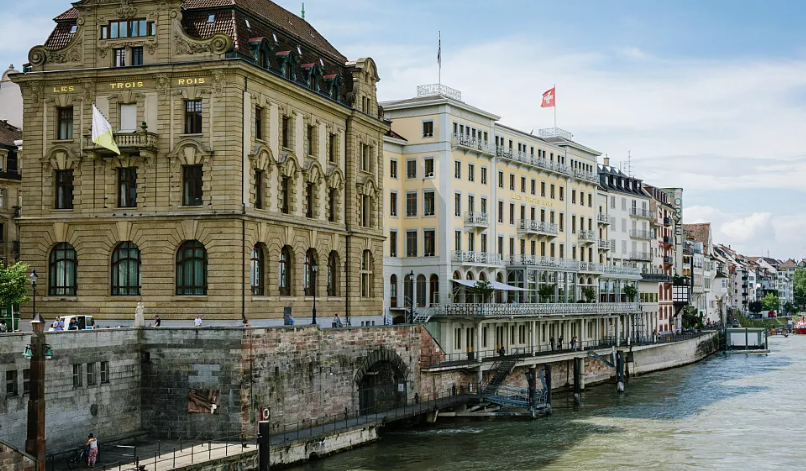
The city of Basel is set to take centre stage next week as it hosts the 69th edition of the Eurovision Song Contest. From 13 to 17 May, 37 countries will compete at the St. Jakobshalle arena, drawing tens of thousands of visitors and turning the Swiss city into a global hotspot for music and celebration.
This year marks the first time Switzerland has hosted the contest since 1989, and anticipation is running high. Organisers report that fans from 80 different countries will be present for the live shows, with a total crowd of up to 50,000 expected to arrive in the coming days.
Swiss fans have purchased the highest number of tickets, eager to welcome the event back home. Germany follows closely behind, with large contingents also coming from the United Kingdom, France, and Spain. The contest remains a powerful draw across Europe and beyond, known for its extravagant performances and electric atmosphere.
As the city prepares for the influx, accommodation prices have surged dramatically. An analysis by sports news outlet Wettfreunde.net, which examined over 1,000 listings on Booking.com and Airbnb, reveals steep increases in lodging costs during the contest week.
For a six-night stay from 12 to 18 May, Booking.com listings average €6,024 — a 139% jump compared to the week before and a 137% rise over the week after. Airbnb prices are also up significantly, with an average cost of €1,804, representing a 130% and 164% increase respectively.
Some listings have reached eye-watering levels. The most expensive property on Airbnb is a loft just 2.5 kilometres from the venue, priced at €67,369 for six nights. On Booking.com, a studio apartment eight kilometres from the arena is listed at €21,906 for the same period.
Despite the soaring rates, budget options do exist — though they remain costly by regular standards. The cheapest available room on Booking.com is a double in a capsule hotel near the venue for €1,178, while Airbnb’s least expensive listing is a €252 apartment located 30 kilometres away.
With the stage nearly set, Basel is bracing for a week of music, spectacle, and international flair as Eurovision fever sweeps the city once more.
Will you be tuning in to the contest or following the excitement from afar?
Travel
Rome Braces for Travel Disruptions Following the Death of Pope Francis
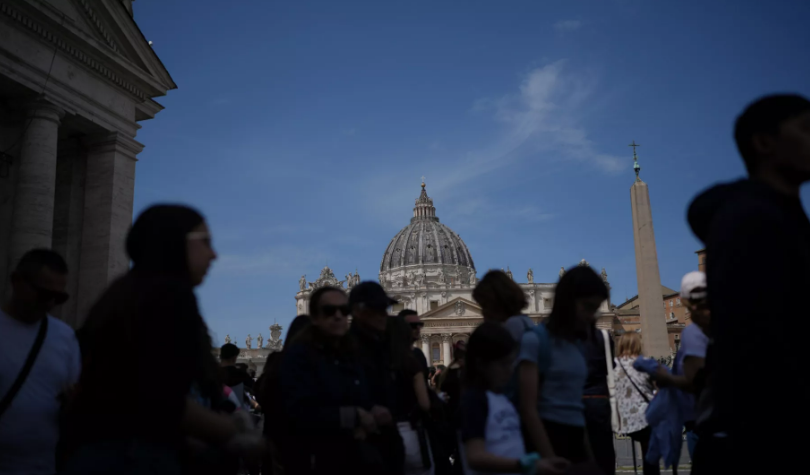
Travellers to Rome over the coming weeks should expect significant disruptions and closures at some of the city’s most iconic religious sites following the death of Pope Francis on April 21.
The Vatican confirmed that Pope Francis, born Jorge Mario Bergoglio in Argentina, died on Monday after suffering a stroke that led to a coma and subsequent heart failure. His passing has set in motion a series of deeply traditional rituals, including a funeral, public mourning, and the election of a new pope.
Among the immediate impacts is the closure of the Sistine Chapel, which will be used exclusively by the College of Cardinals for the conclave—the secretive process to elect the next pope. The Vatican announced the chapel will close to the public from April 28 and remain inaccessible until several days after the conclave concludes, likely reopening in mid-May.
Other nearby attractions will also see changes. The Vatican Museums will remain open except for April 26, when they will close to honor the Pope’s funeral. However, access to the Sistine Chapel will be suspended, and security will be tight throughout Vatican City. Tours of the Vatican Gardens and the Necropolis of the Via Triumphalis are also suspended due to increased security measures as cardinals travel between the chapel and their accommodations.
St. Peter’s Basilica is currently hosting thousands of mourners, with the late pontiff’s body lying in state until April 25. Public access is possible from 7 a.m. to midnight on April 24, and from 7 a.m. to 7 p.m. on April 25. However, long queues and strict dress codes are in place. Parts of the basilica, including the dome, are closed to visitors, and all guided tours are suspended.
The Pope’s funeral is scheduled for April 26 at St. Peter’s Square and is expected to draw millions. Hotel and flight prices have already begun to climb in anticipation of the influx of visitors, many of whom are traveling to witness what is considered a historic and spiritual milestone.
Following the funeral, attention will turn to the election of the new pope. Tourists and faithful can witness the traditional smoke signals from the Sistine Chapel chimney—black indicating no decision, and white signaling that a new pope has been chosen. Crowds are expected to gather in large numbers in St. Peter’s Square for this moment.
While some visitors may be disappointed by limited access to key religious sites, others are embracing the rare opportunity to witness the Vatican during a pivotal moment in modern Church history.
Travel
Travel Industry Faces Scrutiny Over Website Accessibility Failures
-

 Business12 months ago
Business12 months agoSaudi Arabia’s Model for Sustainable Aviation Practices
-

 Business12 months ago
Business12 months agoRecent Developments in Small Business Taxes
-

 Politics12 months ago
Politics12 months agoWho was Ebrahim Raisi and his status in Iranian Politics?
-

 Business11 months ago
Business11 months agoCarrectly: Revolutionizing Car Care in Chicago
-
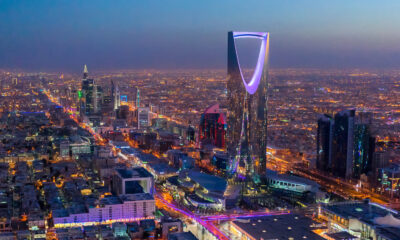
 Business11 months ago
Business11 months agoSaudi Arabia: Foreign Direct Investment Rises by 5.6% in Q1
-

 Technology12 months ago
Technology12 months agoComparing Apple Vision Pro and Meta Quest 3
-

 Politics12 months ago
Politics12 months agoIndonesia and Malaysia Call for Israel’s Compliance with ICJ Ruling on Gaza Offensive
-

 Sports10 months ago
Sports10 months agoKeely Hodgkinson Wins Britain’s First Athletics Gold at Paris Olympics in 800m

